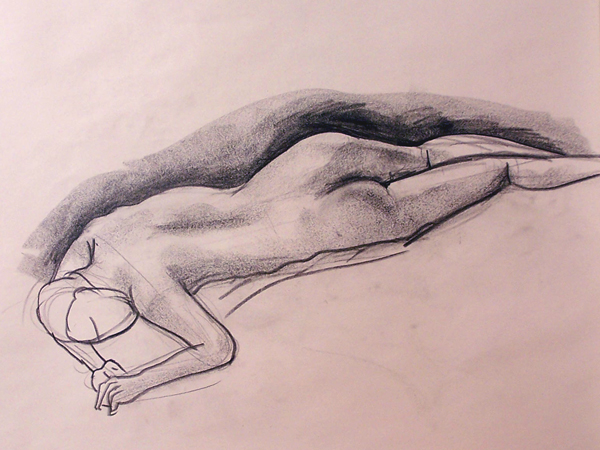
The human body can be captivating, breathtaking, beautiful, dramatic and dynamic. It covers the entire spectra of emotion. From poised stances, graceful, purposeful movements, to short, sharp or aggressive jolts.
The essence of gesture drawing is capturing the movement, motion and the intent of movement.
In this article, we will show how a beginner to gesture drawing can start practising this art – however even if you are an experienced artist, you might pick up a useful tip or two.
Gesture drawing is a fun, responsive, inspiring and liberating form of art. It often appears in a similar space and context to figure drawing.
As mentioned earlier, gesture drawing is capturing the essence of a form, most often human, in motion, across a time period. It’s using exaggerated lines to capture the essence of motion in a pose.
Wikipedia entry on gesture drawing sums it very well:
The primary purpose of gesture drawing is to facilitate human figure in motion.
It’s worth noting that gesture drawing is not a realistic snapshot of accurate details. It’s not polished and refined. However it’s an honest and often rudimentary form of drawing.
Gesture drawing is often used as a warm up before starting other forms of art.
Gesture drawing is useful to train artist’s hand and eyes co-ordination, it also helps with improving artist’s judgment on shapes and forms.
Let’s talk about the mediums that you can use for gesture drawing – it turns out that you can experiment with many different mediums! The only real consideration is that: ensure that you choose a fast drying medium, as you will be working quicker (and being quick is important, see point number 2 on tips and tricks below).
Having said this the medium or combination of medium that you choose will often change the feel of your drawing also, so unleash yourself!
Using pen and ink is great for line work, but not so much for tonal effects.
Pencil can give you the best of both worlds in being great for line as well as tone or shading.
Markers give you bold strokes. If you use older markers that are drying out, you can get great variation in depth and tone also.
If you have some fast drying wet medium such as watercolour brush pens, these are great for broad washes of colour, and can be used with a strong line medium like pen and ink to give softness.
You can use paper or canvas or even stretched fabric if you like. What you use will completely change the feel of your work. Being creative and combining unexpected mediums can be very rewarding. You might want to look at some of the sketchbooks that we reviewed, these are suitable for gesture drawing.
Just keep in mind that the medium combination you choose needs to work together. If you are using fine paper with a wet medium, you may come across some problems in the paper tearing or disintegrating. In this case, choose a heavier grade of paper or different material with a little bit more integrity. Pencil can work on any grade of paper, but on fabric can be problematic, so might best be combined with a paper or canvas.
Remember, there are no mistakes, just learning opportunities. So be brave. Be bold. Try new things. You never know how it will turn out.
Gesture drawing is simple to do but takes practice. There are no hard and fast rules, however keeping the following guidelines in mind will help you get on your way to creative liberation.
So, if you are eagerly swiping your screen or clicking your mouse to scroll down and find more, let’s start with the basics.
We hoped this article has helped you to pick up your pencil, pen or whatever your drawing tool of choice is and start gesture drawing.
Please leave a comment if you have any questions or comments – we would love to hear from you.